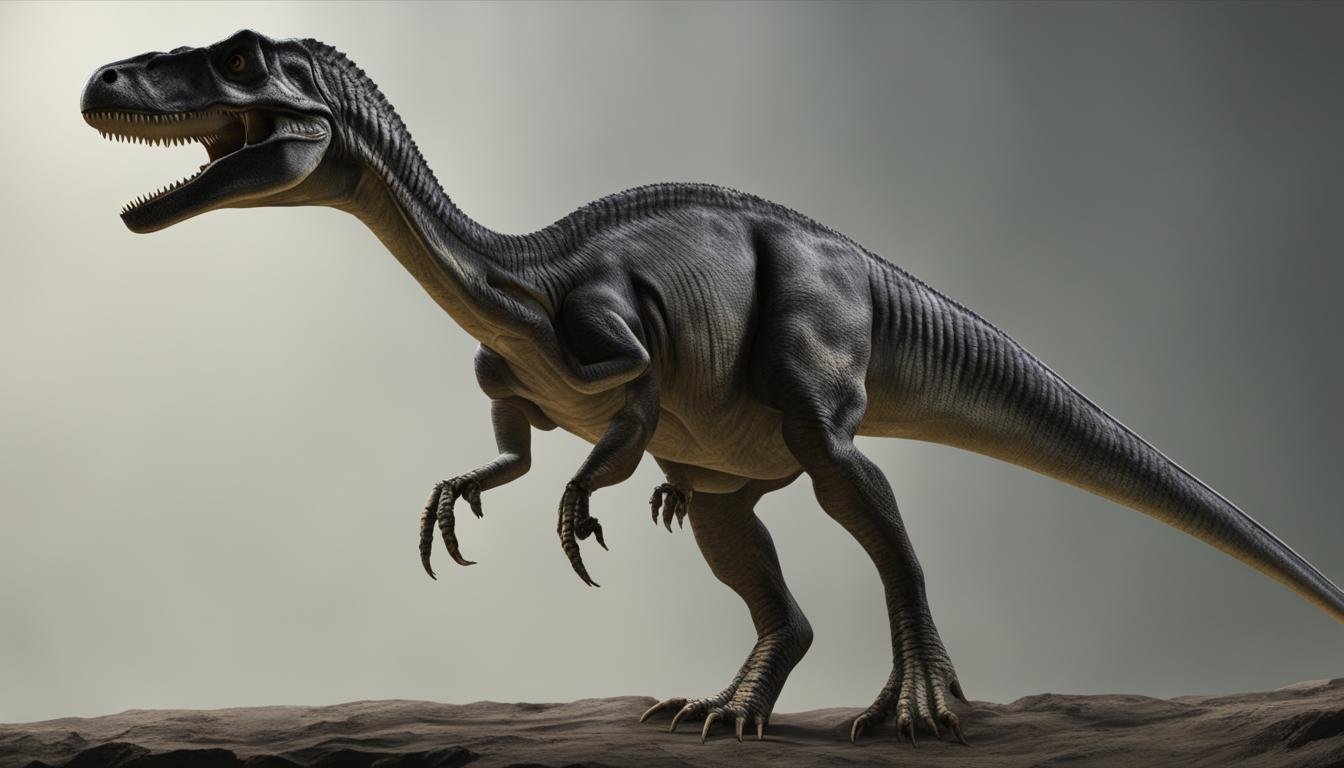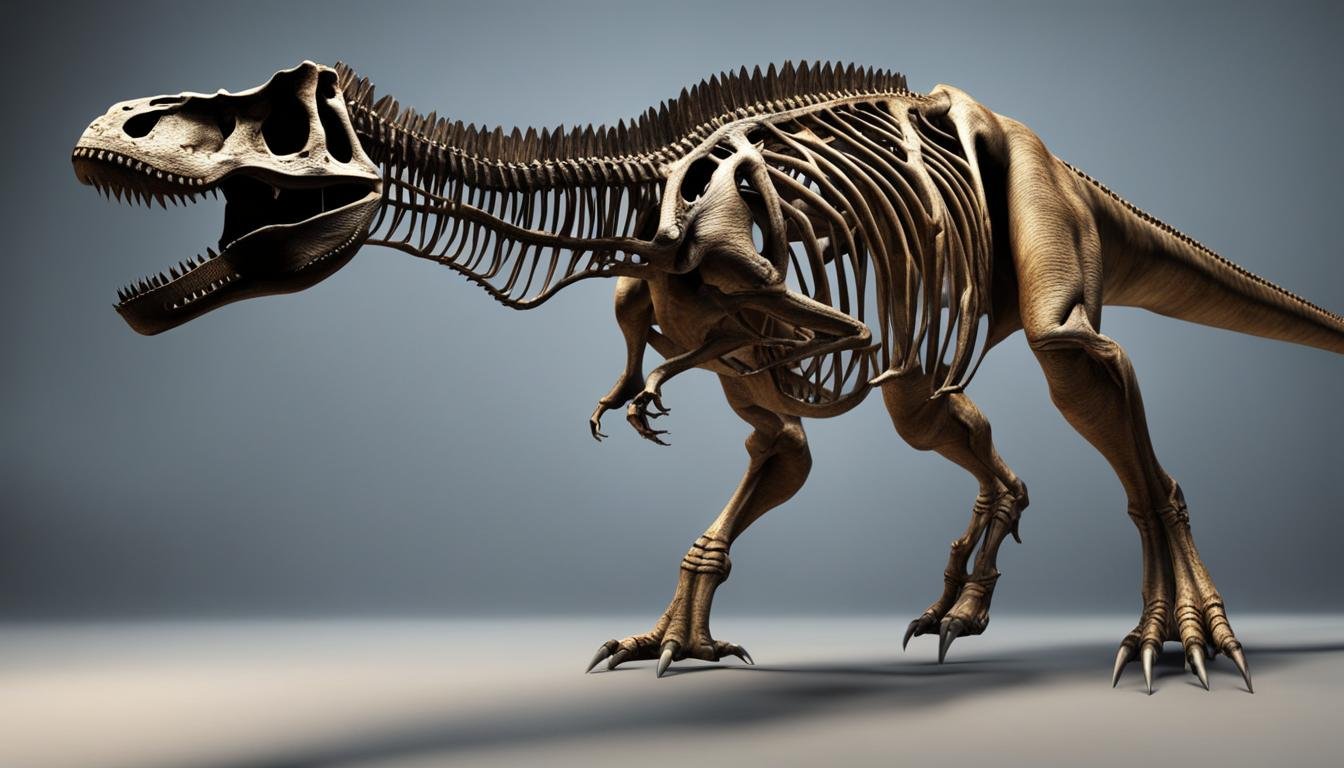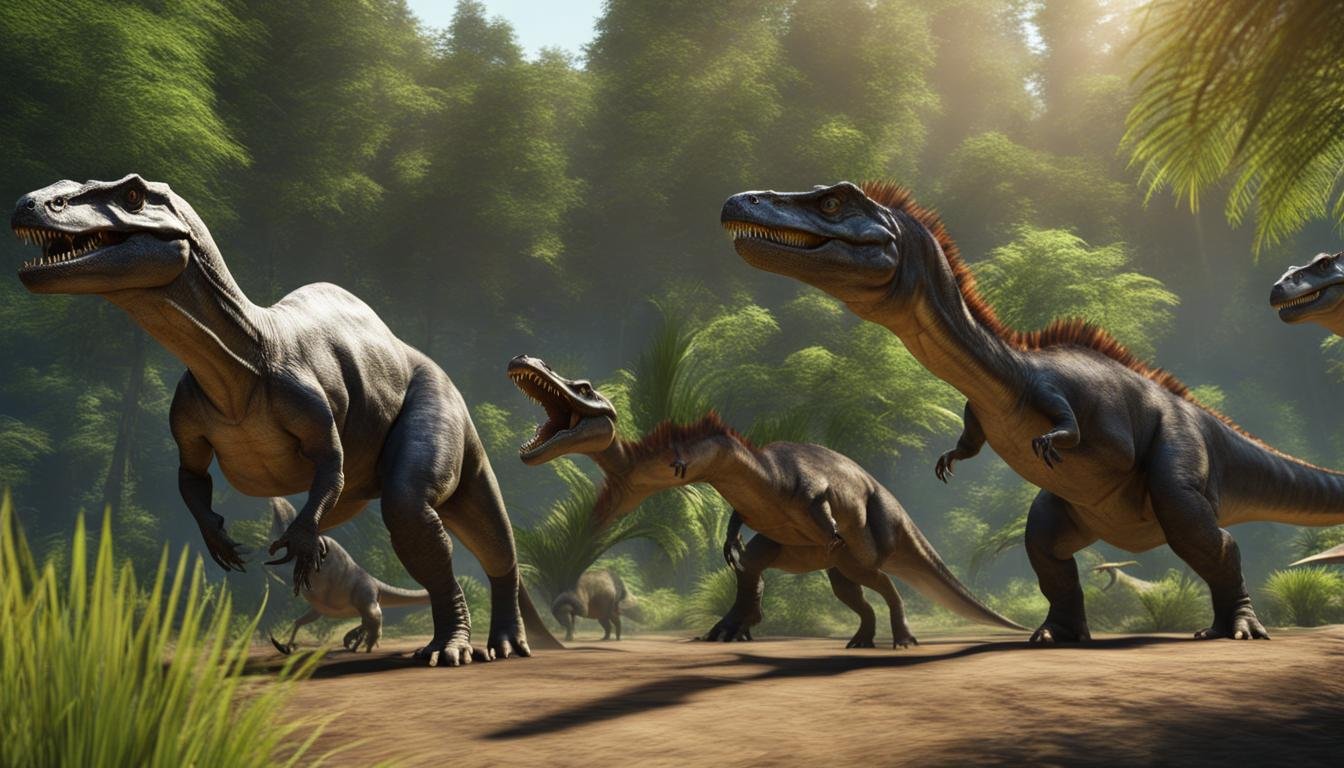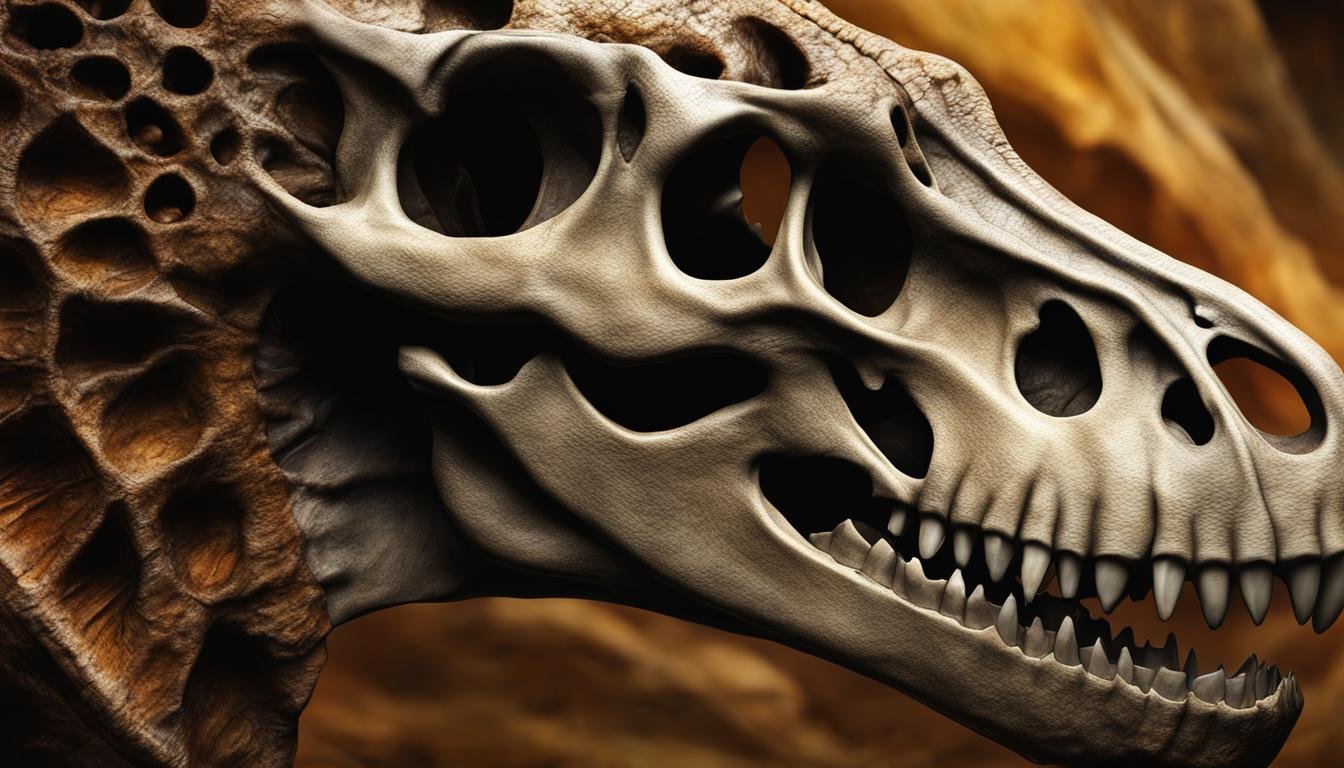Contrary to previous beliefs, recent research has revealed that dinosaurs may have possessed intelligence that was above-average for reptiles. This has sparked a re-evaluation of their cognitive abilities and the role of their brain structure in determining intelligence. In this article, we will explore the fascinating world of dinosaur brain structure and intelligence.
Stegosaurus Brain Size
Contrary to popular belief, Stegosaurus did not have a brain the size of a walnut. While its brain was small relative to its body size, it was still larger than originally thought. An analysis of a well-preserved Stegosaurus braincase revealed that its brain was proportionally small compared to other dinosaurs. However, the idea that dinosaurs were unintelligent based solely on brain size has been largely rejected.
Stegosaurus, a herbivorous dinosaur known for its distinctive plates and spiked tail, had a brain that occupied a small space in its skull. The analysis of the Stegosaurus braincase suggests that its brain was about the size of a lime, rather than a walnut as previously believed. This finding challenges the notion that brain size alone determines intelligence. Dinosaurs, including Stegosaurus, may have possessed complex cognitive abilities despite their relatively small brains.
The idea that brain size is the sole determinant of intelligence has been largely discredited. While Stegosaurus had a small brain compared to its body size, it does not necessarily mean that it was unintelligent. Intelligence is a complex trait influenced by various factors, including brain organization, neural connectivity, and behavioral adaptations.
Although Stegosaurus may not have had the largest brain among dinosaurs, its brain size was likely sufficient for its ecological needs. The development of intelligence is not solely dependent on brain size, but rather the efficiency of neural networks and the ability to process and respond to environmental stimuli. The Stegosaurus brain size discovery highlights the need for a comprehensive understanding of brain structure and organization when assessing the cognitive abilities of extinct animals.
Stegosaurus Brain Size Comparison
| Dinosaur | Brain Size | Body Size |
|---|---|---|
| Stegosaurus | Proportionally small | Large |
| Tyrannosaurus rex | Larger but still small | Massive |
| Triceratops | Relatively small | Enormous |
As seen in the comparison table, Stegosaurus had a proportionally small brain size compared to its large body size. This suggests that the relationship between brain size and body size in dinosaurs is not linear. Further research is needed to understand the specific adaptations and cognitive abilities associated with different brain sizes in dinosaurs.
Brain Size and Body Size Relationship
When it comes to brain size, there is a general correlation with body size in animals. As expected, larger animals tend to have larger brains, while smaller animals have relatively smaller brains. However, the relationship between brain size and body size is not linear. In fact, there are some interesting exceptions that challenge this assumption.
A well-known example is that of small mammals like mice. Despite their tiny size, mice have relatively larger brains compared to their body size. This is known as relative brain size, which refers to the brain size in relation to the animal’s body mass. On the other end of the spectrum, we have animals like elephants, which have large bodies but relatively small brains compared to their size.
This phenomenon highlights the fact that brain size relative to body size is not the sole determinant of intelligence. While a larger brain may provide more neural resources, other factors such as brain organization, connectivity, and the development of specific brain regions also play a crucial role in determining cognitive abilities.
| Animal | Body Size | Brain Size | Brain-to-Body Mass Ratio |
|---|---|---|---|
| Mouse | Small | Relatively large | High |
| Elephant | Large | Relatively small | Low |
As we can see from the table above, the brain-to-body mass ratio of a mouse is relatively high, indicating a higher proportion of brain weight compared to body weight. In contrast, an elephant has a low brain-to-body mass ratio, suggesting less brain weight relative to its massive body. This demonstrates that intelligence cannot be solely determined by brain size or body size, but rather by the intricate interplay of various factors.
Encephalization Quotient (EQ)
The Encephalization Quotient (EQ) is a measure that allows scientists to compare the relative brain sizes of different animals, taking into account their body sizes. It provides insights into cognitive abilities and intelligence across various species. EQ is calculated by dividing the actual brain size of an animal by the expected brain size for its body size.
Compared to other reptiles, mammals such as primates and carnivores have higher EQs, indicating that they have relatively larger brains compared to their body sizes. Herbivores and insectivores, on the other hand, have lower EQs, suggesting relatively smaller brains. Humans have the highest EQ among mammals, reflecting our advanced cognitive abilities.
However, it is important to note that the Encephalization Quotient may not be applicable to all animals, including dinosaurs. The formula does not take into account other factors that contribute to intelligence, such as brain organization and complexity. Additionally, estimating brain size in dinosaurs is challenging due to limitations in fossil evidence.
Encephalization Quotients of Selected Animals
| Animal | Encephalization Quotient (EQ) |
|---|---|
| Human | 7.4 |
| Bottlenose Dolphin | 5.6 |
| Chimpanzee | 2.5 |
| Elephant | 1.8 |
| Tyrannosaurus rex | 0.65 |
| Stegosaurus | 0.06 |
The Encephalization Quotient helps us compare brain sizes across different species and provides a rough estimate of cognitive abilities. However, it is essential to consider other factors, such as brain organization and complexity, when assessing intelligence.
While the Encephalization Quotient offers valuable insights, it is not a comprehensive measure of intelligence. It is important to remember that intelligence is a complex trait influenced by various factors, including brain structure, social interactions, and ecological pressures. Further research and exploration of dinosaur brain structures and cognitive abilities are necessary to gain a more complete understanding of their intelligence.
Intelligence in Dinosaurs
Intelligence in animals is a fascinating subject, and dinosaurs are no exception. While it is challenging to determine definitively how intelligent dinosaurs were, scientists have found clues by studying the relative size of their brains and their brain architecture. Dinosaurs with larger brains relative to their body size would have had more brain weight available for complex cognitive tasks. However, it is important to note that the brain-to-body mass ratio is not the sole factor determining intelligence.
The evolution of intelligence is a complex process influenced by various factors including brain size, organization, and behavior. In the case of dinosaurs, their brain size relative to body size provides insights into their cognitive abilities. The evolution of the cerebral cortex and brain folding also plays a crucial role in determining intelligence. The cerebral cortex, responsible for higher cognitive functions, was likely present in some dinosaur species, although it might not have been as complex as in mammals.
In addition to brain size, the organization of the brain is essential for understanding intelligence. The compact and layered structure of the neocortex found in mammals allows efficient communication between different brain regions. In contrast, dinosaurs, particularly birds, have a less compact brain architecture. As brain volume increases in birds, the efficiency of brain communication may decrease. This may have presented a limitation for dinosaurs in terms of their cognitive abilities compared to mammals.
| Dinosaur | Brain-to-Body Mass Ratio |
|---|---|
| Tyrannosaurus Rex | 0.0017 |
| Velociraptor | 0.0024 |
| Stegosaurus | 0.0096 |
The brain-to-body mass ratio provides an indication of relative brain size compared to overall body size. However, it should be noted that this ratio alone does not provide a complete measure of intelligence.
Problems with EQ in Dinosaurs
The measurement of brain size relative to body size, known as the Encephalization Quotient (EQ), has been a valuable tool in estimating the cognitive abilities of animals. However, when it comes to dinosaurs, traditional comparisons of brain volume to body mass using EQ have limitations that need to be considered.
One of the main challenges is that the volume of the endocast, which is a fossilized impression of the brain, may not accurately represent the actual size of the dinosaur’s brain. The preservation and interpretation of these endocasts can vary, making it difficult to obtain precise measurements and reliable comparisons between different species.
The transition from reptiles to birds further complicates estimating dinosaur brain volume. Modern birds are descendants of theropod dinosaurs, and their brains have undergone significant changes over millions of years. This means that using the brain size of birds as a basis for estimating dinosaur brain size may not be entirely accurate.
“The volume of the endocast, which is a fossilized impression of the brain, may not accurately represent the actual size of the dinosaur’s brain.”
Theropod Brains
Theropod dinosaurs, like their reptilian counterparts, possessed brains that were similar in structure. The cerebrum-to-brain volume ratio in theropods such as Carcharodontosaurus saharicus and Allosaurus was comparable to non-avian reptiles. This suggests that their cognitive abilities may have been limited compared to other dinosaurs. However, there were exceptions to this trend.
Troodontids, a group of theropods that includes Troodon, displayed relatively larger brains and more advanced behaviors. This indicates that they had higher cognitive abilities compared to other theropods. The larger brain size in troodontids may have provided them with advantages in problem-solving and complex tasks.
While the brain structure of theropods may have been similar to reptiles, the differences in brain size and cognitive abilities among different species highlight the complex nature of dinosaur intelligence. It is important to consider both brain size and organization when evaluating the cognitive capabilities of these ancient creatures.
The Cognitive Abilities of Troodontids
Troodontids, a subgroup of theropod dinosaurs, exhibited relatively larger brains and advanced behaviors compared to other theropods. This suggests that they had higher cognitive abilities, possibly enabling them to navigate complex social structures, solve problems, and adapt to changing environments.
| Troodontids | Theropods | Comparison |
|---|---|---|
| Have larger brains | Have smaller brains | Larger brain size may indicate greater cognitive abilities |
| Exhibit advanced behaviors | Exhibit basic behaviors | Advanced behaviors suggest higher cognitive capabilities |
| Possibly capable of problem-solving | Limited problem-solving abilities | Larger brain size may provide advantages in complex tasks |
“The larger brain size and advanced behaviors observed in troodontids provide intriguing insights into the cognitive abilities of certain theropod dinosaurs.”
Exploring the Complexity of Dinosaur Intelligence
The study of theropod brains contributes to our understanding of dinosaur intelligence and how it compares to other animal groups. While the brain structure of theropods resembled that of reptiles, the presence of relatively larger brains in troodontids suggests that they had advanced cognitive abilities.
However, it is important to note that brain size is not the sole determinant of intelligence. Other factors, such as brain organization and the evolution of specific brain regions, also play crucial roles. The unique cognitive abilities exhibited by troodontids highlight the complexity of intelligence and its evolution in ancient species.
Archaeopteryx Brain
The brain of Archaeopteryx, a remarkable early bird-like dinosaur, provides insights into its cognitive abilities. The cerebrum-to-brain volume ratio in Archaeopteryx is closer to that of modern birds, suggesting that it possessed more advanced cognitive capabilities compared to other dinosaurs. The brain size and organization seen in Archaeopteryx may have been a precursor to the complex cognitive abilities observed in modern birds.
The brain structure of Archaeopteryx indicates a potential for higher intelligence. However, it is important to note that brain structure alone is not the only factor that influences intelligence. The evolution of cognitive abilities is a complex process that involves various factors, including behavior and brain organization.
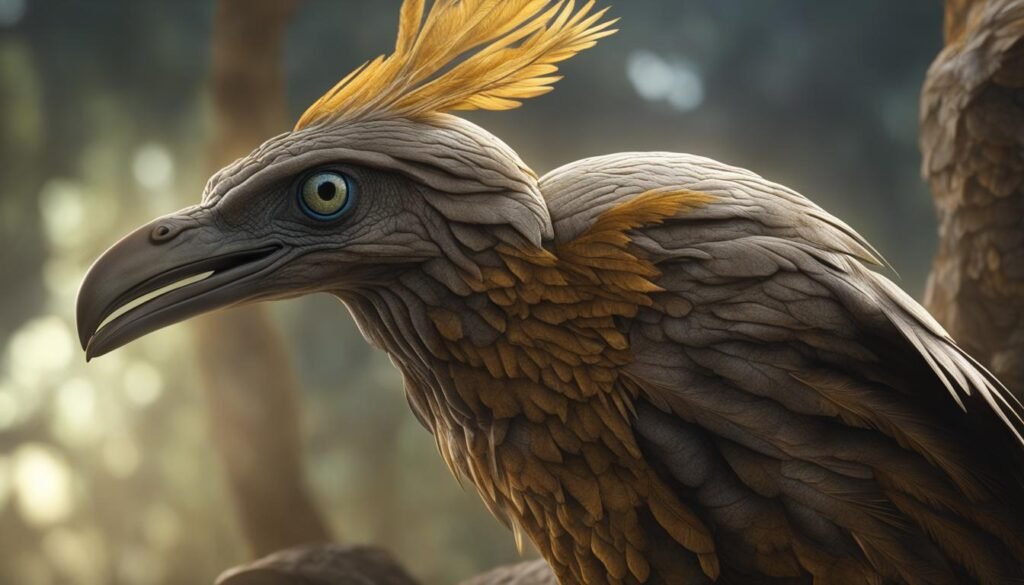
The Limitations of Dinosaur Brain Architecture
The brain architecture of dinosaurs, including birds, differs from that of mammals and may have imposed limitations on their cognitive abilities. Unlike mammals, whose brains have a thin layer of neurons called the neocortex that allows for efficient communication between different brain regions, dinosaur brains have a less compact structure. This less efficient brain architecture may become increasingly limiting as brain volume increases.
While some dinosaurs, such as Troodon, had relatively larger brains and exhibited advanced behaviors, their brain architecture still differed from that of mammals. The evolution of the neocortex and brain folding in mammals allows for increased connectivity and processing power, which may have provided mammals with a cognitive advantage over dinosaurs.
| Dinosaur Brain Architecture | Mammalian Brain Architecture |
|---|---|
| Less compact | Neocortex for efficient communication between brain regions |
| Potentially less efficient | Greater connectivity and processing power |
This difference in brain architecture may explain why mammals, including humans, have exhibited higher levels of intelligence compared to non-avian dinosaurs. While some dinosaurs may have had relatively larger brains, their brain structure may have limited their cognitive abilities compared to mammals.
The Debate on Dinosaur Intelligence
Scientists have long debated the intelligence of dinosaurs and the extent to which they developed cognitive abilities similar to humans. The study of dinosaur brain structure and size has provided valuable insights into this ongoing debate. While some researchers argue that certain dinosaurs possessed the necessary brain capacity for complex cognitive tasks, others believe that the unique brain architecture of dinosaurs would have limited their intelligence compared to mammals.
One of the key points of contention is the relative size of dinosaur brains. It is important to note that brain size alone does not determine intelligence. While some dinosaurs had relatively larger brains compared to their body size, the organization and structure of their brains may have played a significant role in their cognitive abilities.
Another aspect of the debate revolves around the evolutionary history of dinosaurs. The transition from reptiles to birds, which are considered descendants of dinosaurs, further complicates our understanding of dinosaur intelligence. The brain architecture of birds, including early bird-like dinosaurs like Archaeopteryx, is distinct from that of mammals. The presence of certain brain characteristics in dinosaurs may have influenced their cognitive abilities in unique ways.
Understanding dinosaur intelligence based solely on brain structure is a complex task. It requires careful consideration of brain size, organization, and evolutionary history. The ongoing debate reflects the challenges scientists face in unraveling the mysteries of dinosaur cognition.
| Arguments Supporting Dinosaur Intelligence | Arguments Against Dinosaur Intelligence |
|---|---|
| Dinosaurs with relatively larger brains had more brain weight available for complex cognitive tasks. | The brain architecture of dinosaurs, particularly birds, may have limited their intelligence compared to mammals. |
| The presence of certain brain characteristics in dinosaurs, like advanced behaviors in troodontids, suggests higher cognitive abilities. | The transition from reptiles to birds complicates estimating dinosaur brain size and volume. |
The debate on dinosaur intelligence highlights the complexities of understanding cognition in extinct species. It reminds us that intelligence is not solely dependent on brain size, but also on brain organization and evolutionary history. Further research is needed to uncover more evidence and provide a more comprehensive understanding of dinosaur intelligence.
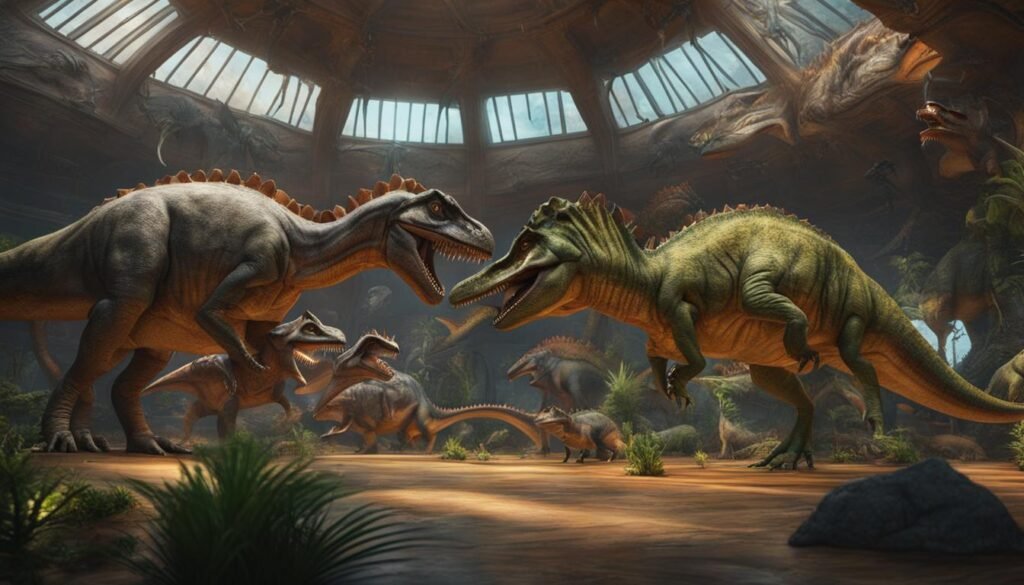
The Evolution of Intelligence
The evolution of intelligence is a fascinating topic that extends beyond humans. It encompasses a wide range of species, including birds, whales, and even cephalopods like octopuses. Intelligence is not predetermined but arises through a complex interplay of various factors, such as brain size, organization, and behavior.
Humans are often regarded as the pinnacle of intelligence, but other species have also evolved sophisticated cognitive abilities. For example, birds demonstrate remarkable problem-solving skills and the ability to use tools, while dolphins exhibit complex social structures and advanced communication systems. These diverse manifestations of intelligence highlight the adaptability and versatility of cognitive abilities in different organisms.
“Intelligence is the ability to adapt to change.” – Stephen Hawking
Studying the intelligence of dinosaurs offers valuable insights into the evolution of cognitive abilities. While dinosaur brain structure differed significantly from that of mammals, some dinosaurs, such as troodontids like Troodon, had relatively larger brains and displayed advanced behaviors. This suggests that cognitive abilities in dinosaurs were not solely determined by brain size, but also by factors such as brain folding and the development of specific brain regions.
| Dinosaur | Brain-to-Body Mass Ratio |
|---|---|
| Tyrannosaurus Rex | 0.006 |
| Troodon | 0.075 |
| Stegosaurus | 0.0003 |
The table above provides a comparison of the brain-to-body mass ratio in different dinosaurs. It is evident that there was significant variation in brain size relative to body size among different species. This further emphasizes the importance of considering brain organization and structure alongside brain size when assessing intelligence in dinosaurs.
Understanding the evolution and limitations of dinosaur intelligence contributes to our broader understanding of cognitive development in different species. Further research is needed to uncover additional insights into the mysteries of the dinosaur brain and its role in their behavior and cognitive evolution.
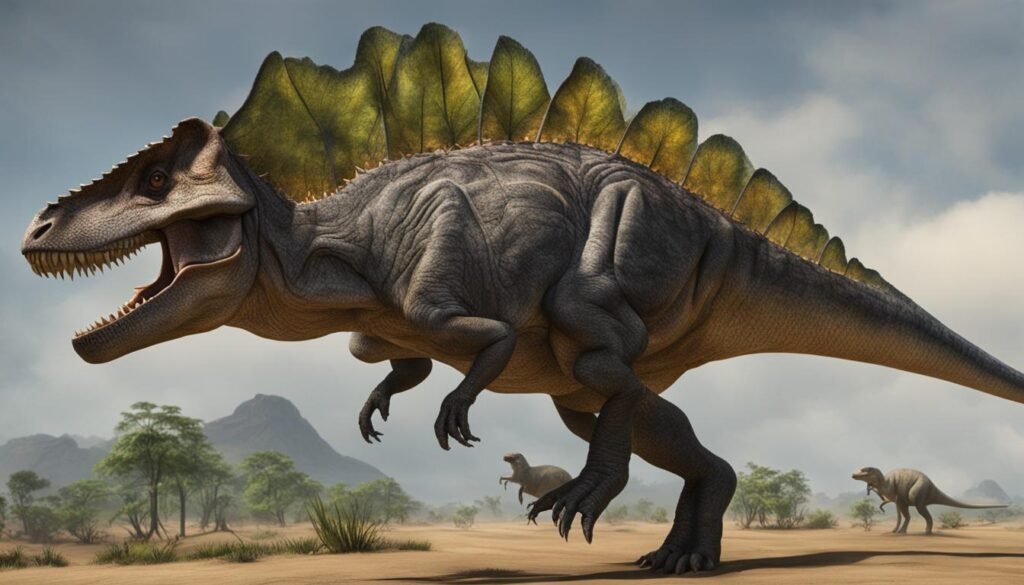
Conclusion
In conclusion, the intelligence of dinosaurs is still a subject of ongoing discussion among scientists. While some smaller carnivorous dinosaurs may have exhibited above-average intelligence for reptiles, their brain architecture and differences from mammals may have limited their overall cognitive abilities compared to humans. It is important to consider that brain size relative to body size is just one factor in determining intelligence, and the evolution of intelligence is influenced by various factors including brain organization and behavior.
Although the Encephalization Quotient (EQ) has been used as a measure of cognitive abilities in animals, its applicability to dinosaurs may be limited. Traditional comparisons of brain volume to body mass in dinosaurs have their own challenges, such as accurately estimating brain volume and considering the transition from reptiles to birds. Alternative methods, such as comparing the size of specific brain regions, may provide a more accurate measure of dinosaur brain size.
Overall, studying the intelligence of dinosaurs offers valuable insights into the evolution of cognitive abilities and the potential constraints imposed by brain structure. Further research is needed to fully understand the mysteries of the dinosaur brain and its role in their behavior and cognitive evolution. By unraveling the complexities of dinosaur intelligence, we can gain a better understanding of the development of intelligence in different species.






